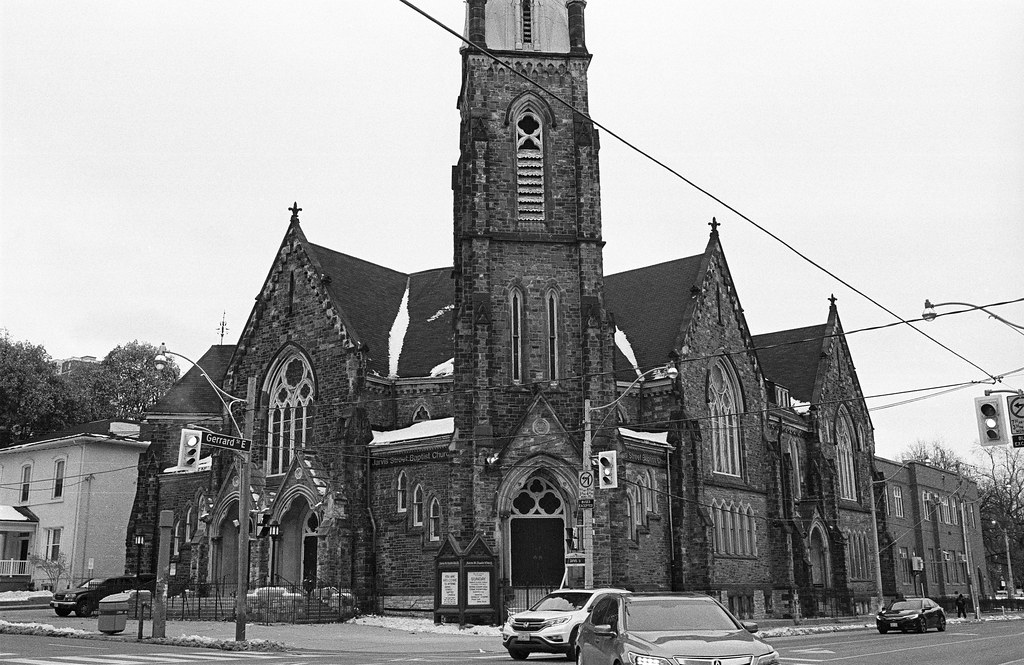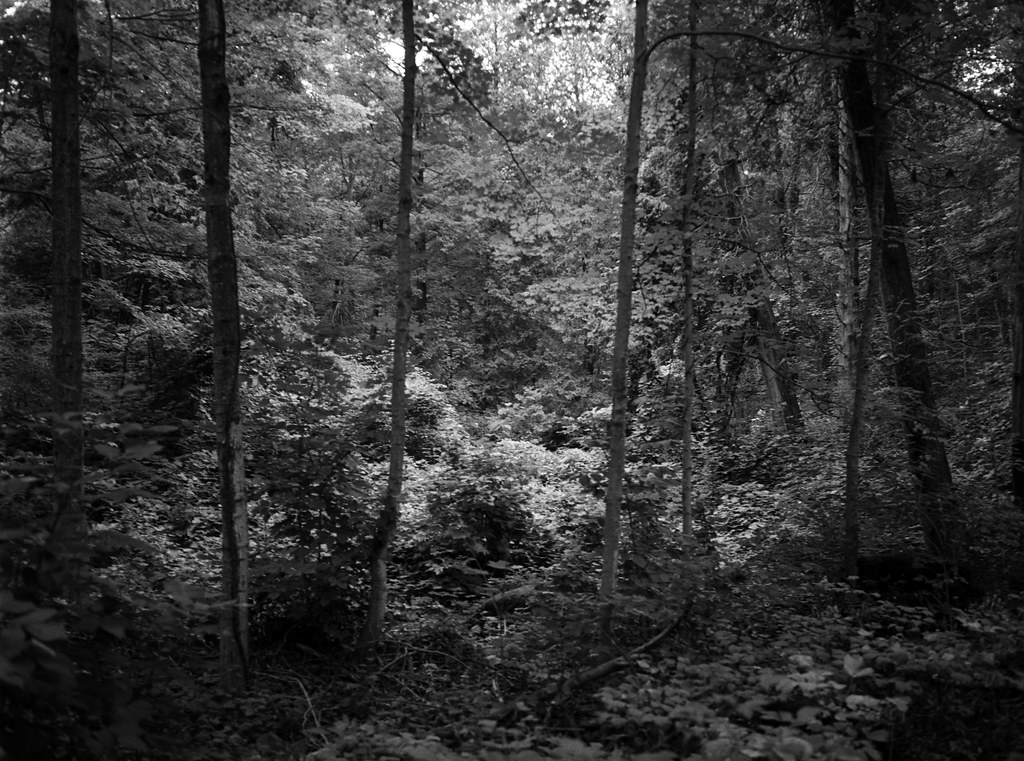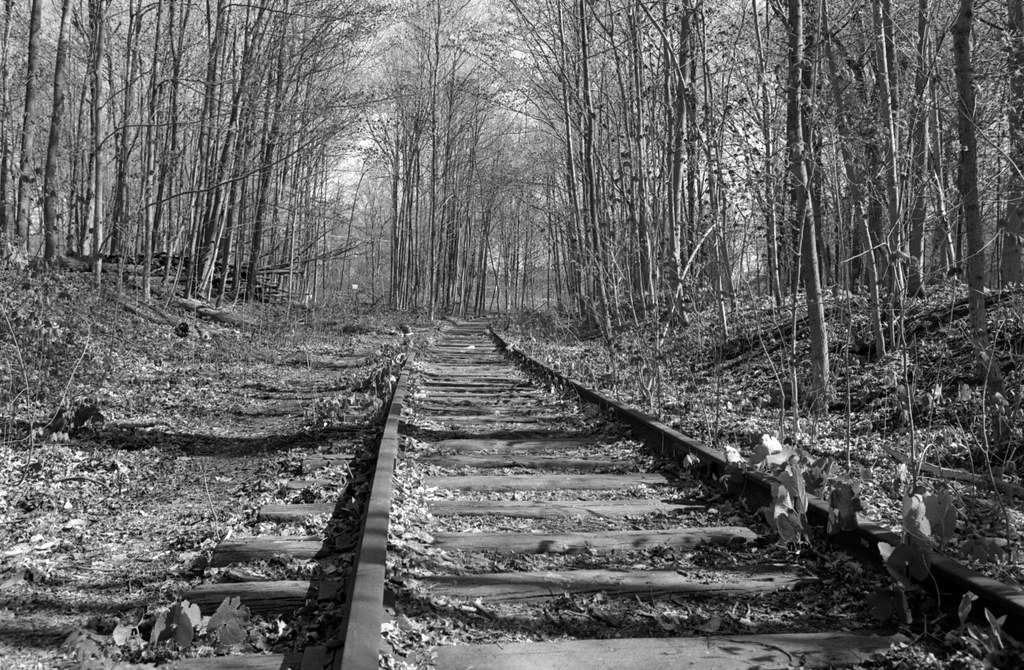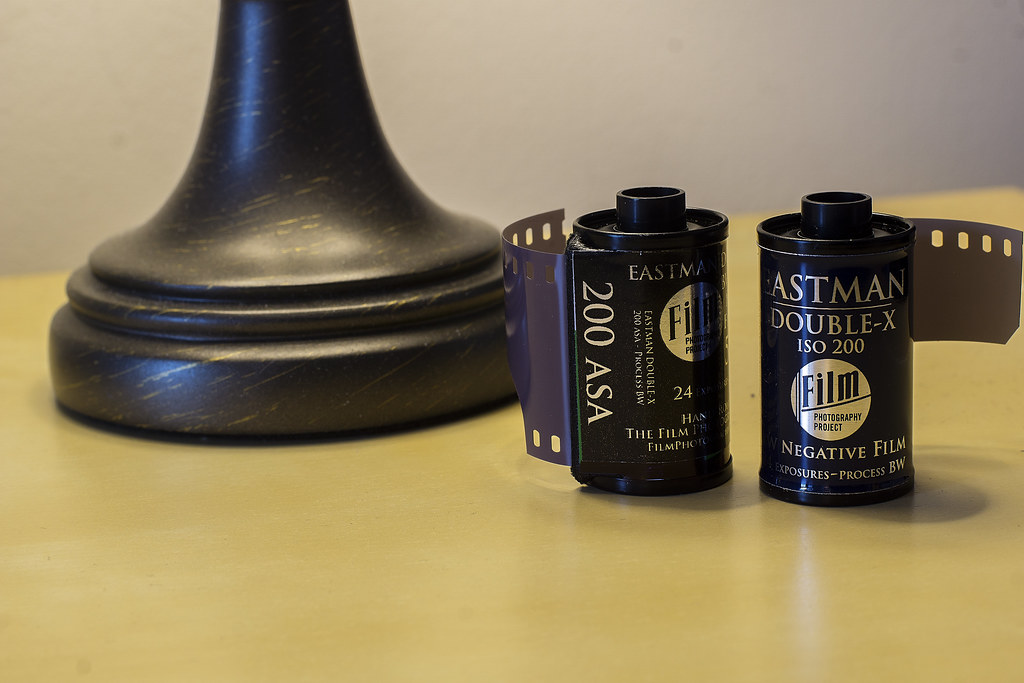While not many people would notice it, but when watching a film, and you come across this amazing sequence in black & white, the rich tones across the board, and just a classic cinematic look and wonder, how can I make my still images look that good! Well if you are watching a film shot on traditional film stock the answer is rather easy, Eastman Double-X 5222. Chances are you’ve seen a film shot on this stock, such as the opening sequence of Casino Royale or Shindler’s List. I first came across Double-X a few years back when I purchased some rolls through the Film Photography Project and while my first rolls were lab developed (Thanks again Old School Photo Lab) once I started developing on my own I started seeing the amazing nature of this film! While I mostly use it for urbanscapes I should give it a try for some portrait work. With Eastman Double-X being primarily a motion picture film there is little in the way of still photography developer information, but now that more people shooting and self-developing you can find a wide-range of developer combos and speeds.
Film Specs
Type: Panchromatic Black & White
Film Base: Polyester
Film Speed: ASA-250 (Daylight), ASA-200 (Tungsten) Latitude: 64-1600
Formats Available: 135 (35mm), Medium Format (120, CineStill BwXX Only)
Roll 01 – Kodak D-76
Ideally, you will want to develop your Double-X in D96. While the dedicated motion picture developer is far more available now than when Double-X first started to be spooled for use in still cameras, D-76 is your next best choice. There are a lot of different dilutions and times listed for the combination. When developed in the stock dilution, I find the contrast too high for my tastes. I recommend using a 1+1 dilution that gets you close to what you get from D96 at stock dilution, but if you want less contrast, you can step it up to 1+2, especially in a high-contrast situation. Both deliver an excellent tonal range while maintaining good sharpness and moderate grain control. Double-X is not a fine-grain film, but the grain structure is classic mid-century and delivers a pleasing structure and edge sharpness.




Roll 02 – Kodak HC-110/Ilford Ilfotec HC
One of the first rolls I ever shot was developed by a lab using Kodak HC-110; while the developer did a good job, the images were not pleasing, at least to me. The contrast was high, and the grain was evident but not pleasing. Ultimately, I think it was more the situation I shot these in and the development that resulted in this because the second roll that I developed myself proved a lot cleaner. Now, when using Dilution B (1+31), you will get a lot more contrast, but I have since switched to using Dilution H (1+63) for a much smoother experience, more in line with what I expect from Double-X. While that visible grain is still there, you see a slight reduction in edge sharpness. This reduction is more than compensated by a smoother tonal range and lower contrast.




Roll 03 – Rodinal
While Rodinal may not be your first choice for Double-X, after it was released in 120, I decided to give it a shot. The results were spectacular; while you do have time for both 1+25 and 1+50, I recommend going with the 1+50 times. For a dilute mix of Rodinal, the time is surprisingly short, and the results are far better than I expected. While using 120 films helped with the rendering of the grain, you see that increase in edge sharpness and the beautiful mid-century grain structure. You do get an increase in contrast, but it works well when shooting in low-contrast conditions. I haven’t tried this combination with 35mm, but it would work the same with a bit more visible grain because of the smaller negative. But I wouldn’t discount it, besides if you are concerned, you can always stand-develop the film.




Roll 04 – Kodak D96
Saving the best for last, Kodak D96 is the dedicated developer for Double-X. If you want to see Double-X’potentialotental, the n D96 is the perfect combination. The one thing I did notice is that the listed 6.5 minutes tend to over-develop the negatives, but the straight six-minute time does a better job and makes the negatives far easier to scan. You get excellent edge sharpness with a finer grain without losing the structure. But the real power is in the contrast and tonal range, which gives you that wide latitude that you would expect from a motion picture film. You do have both a stock and 1+1 dilution listed; the only difference I’ve seen is that the 1+1 will lower the contrast, so when shooting in high-contrast conditions, a 1+1 will give better results than the stock dilution. But for 90% of your shooting/developing, the stock dilution will deliver superb results.




Final Thoughts
These days the term “Cinematic” is throw around a lot for photography, while I tend to shy away from these buzz words, if you’re looking to make your images cinematic, then shooting motion picture film is a great place to start. While originally difficult to source, Double-X is readily available from multiple sources including the Film Photography Project, CineStill, Flic Film Atlanta Film Co, and many other smaller respoolers. Plus with the FPP and CineStill producing D96 it also makes it easier to use the dedicated developer for the best results. But there are a tonne of other excellent choices to develop Double-X, one of my favourites is ZoneImaging 510-Pyro and Adox FX-39 II. And I have even seen some incredible results shooting Double-X at ASA-1600 and developing in Ilford RT and D96! The one problem that I have found with Double-X is that when I have developed the film it seriously cups, in both 35mm and 120 formats. I’ve been precise with my temperature control, but no matter what I do, it still cups. Which when scanning with a flatbed can be difficult and some dedicated film scanners struggle with grabbing the motion picture style sprockets. Thankfully with some back rolling and patience the cupping can be mitigated enough to allow for scanning. You can also under-expose the film and develop with Diafine for some amazing work when working indoors. And now that you can get the stock in both 35mm and 120, it makes it a delightful daily driver film when testing cameras or travel.
Further Reading
Don’t just take my view on Eastman Double-X, check out these other reviews.
Japan Camera Hunter – Film Review: Kodak Double-X
Casual Photophile – Eastman Double-X (5222) – A Cinematic Black and White Film
Emulsive – Film Stock Review: Kodak Eastman Double-X (5222) 35mm Format
Mr Leica – Eastman Kodak Double-X 5222 Review
Rozelle Darkroom – Film Opinion: Eastman Kodak Double-X Negative Film
Kashphoto – Rare Film Post: Kodak Double-X Film Review
Blue Moon Camera & Machine – Film Friday: CineStill BwXX
